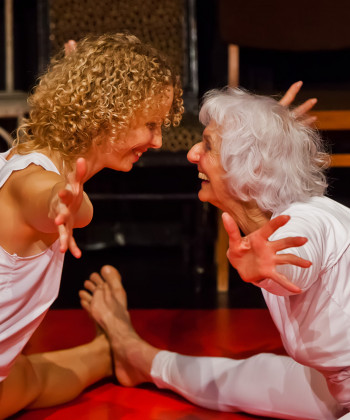


In this duet of two women, a 93-year-old Auschwitz-Birkenau survivor teams up with a young dancer
Éva is a passionate pleasure-seeker, while Emese is bent of saving the world. Éva never says good-bye, while Emese enjoys coming home. What connects them is the common language of dance. One of the last witnesses of the Holocaust, Éva has kept her clothes she wore as a young woman, and they fit Emese to a tee. Emese is tall; Éva likes to believe she has remained so. They look alike.
What is at stake in this piece is the question of whether the boundary between their two worlds is really permeable. Can personal experience be passed on? Or, conversely, is it possible to grasp the problems of a young person today by someone carrying such a heavy baggage of a long life as Éva does? In short, is it feasible for these two to share the stage for a Grand Dance Duet?
“When you look back on your life in old age, you are like a wayfarer standing on a peak and surveying the land below. You take in everything in one glance, the near and the far. But precisely because everything comes into your view simultaneously, the planes of time do not cohere into some kind of chronological order before you, but are thrust upon one another with blurred outlines. “
(Éva Fahidi: A Dolgok Lelke — The Soul of Things)
*The Hungarian sea lavender (Limonium gmelinii ssp. hungaricum) is not an agricultural crop but a species of tart-scented flower of the leadwort family native to Hungary that used to thrive for miles and miles on the arid steppes around Debrecen, where it successfully adapted to alkaline soils. (Its Hungarian name of sóvirág literally translates as “salt flower.”)
Performers: Emese Cuhorka, Éva Fahidi
Directed by Réka Szabó
Dialogue: Krisztián Peer, Anna Zsigó
Lighting: Attila Szirtes
.jpg)
The rehearsal process, interspersed by snapshots of Éva’s life, has been recorded in a community-sponsored documentary film now being edited.